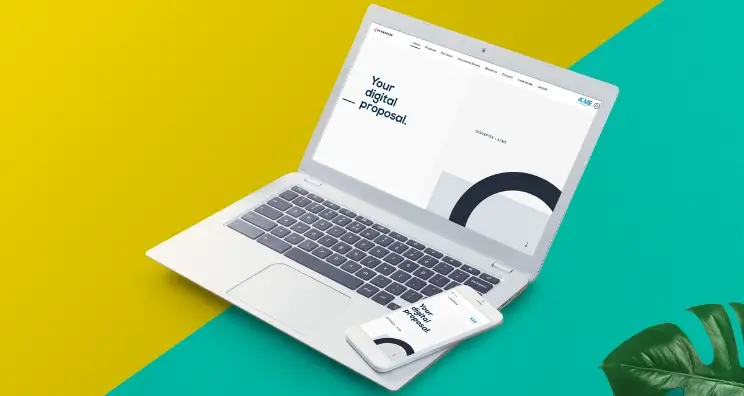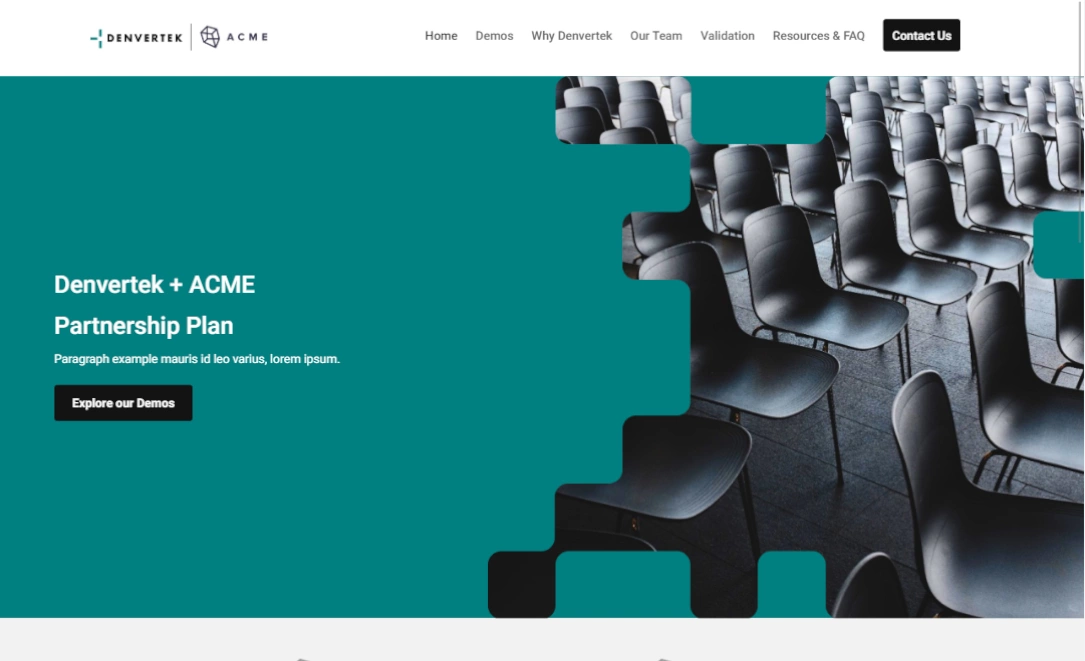Teamwork makes the dream work—especially when it comes to putting together a solid sales deck.
It takes a lot of stakeholders to create a strong RFP response that will grab the attention of a potential client.
The more team members involved in crafting a thoughtful, creative company presentation, the more likely your deck will close the deal.
The key stakeholders and their roles
Several disciplines come together when creating a proposal deck in response to an RFP for a big pursuit.
Here is the team structure you’ll need at your table.
Project manager – This position is tasked with keeping to deadlines and overseeing the project milestones from start to finish. They help keep everyone accountable.
Sales team – Let the bidders vying for the project on behalf of the company create the core content for the deck.
Finance team – This group will need to determine pricing as well as payment terms.
Marketing department – These are the storytellers of your team so let them come up with creative content for the deck that will resonate with the company you’re pitching.
Design team – They will be in charge of creating the format and look of the deck once the handoff of content is complete.
Branding department – One of the last steps will be to give your branding gurus a chance to make sure the deck is sticking to brand guidelines for both your business and also your potential clients.
Legal team – Before this goes out as a final RFP, make sure legal gives it a pass to ensure it’s compliant.
Now that you’ve assembled the team, it’s time to determine what must be included in the deck.
6 elements to make your deck stand out
When it’s time to hit the deck, you’ll want to consider incorporating some of these elements into your proposal.
A strong executive summary
This is usually written by your company CEO or the Senior Lead on the team putting the proposal together. This is where you want to instantly grab your audience’s attention and give them a rundown of what they can expect from the proposal, along with an overview of how you plan to help and de-risk them. This can be the last piece you put together for your pitch since it’s a summary of the plans you’ll have just finished outlining.
Fix the problem
Remember that a client presentation is just that—it’s for the client. Show them you understand their unique problem that they’re looking to solve and find ways throughout the deck to incorporate a way your team will execute on that solution.
Show the solution
Imagine having a leaky faucet and in your hunt for the perfect plumber (affordable, well-fitting pants, etc) you don’t find anyone that you can hire that actually tells you how they’ll fix the leak? Here is your chance to highlight what you can do for your potential client and make it personal. Introduce your team and highlight their expertise in order to show your authority.
Mark out the milestones
Outline how success will be measured right in your client presentation. The best way to share this data is to make it extremely digestible, preferably in a chart or infographic to illustrate your points, rather than in a lengthy paragraph.
A clear call-to-action
Your clients made it to the end of the sales deck. Bravo! Now make it abundantly clear what the next step should be. Include your contact information and a link to a custom microsite for them to access.
Once you’ve completed your well-written proposal to be submitted, make sure you make it easy for all company stakeholders to access it by adding it to your microsite.
Showcase your proposal on a microsite
Everybody loves a touchdown during a football game. But you know what really gets the fans going? A little end zone dance.
Consider a microsite your final celebration. Your team has put together a killer presentation and now you can upload it for everyone to access time and time again. It’s that final piece that will push your sales proposal above others hoping to land the job.

A microsite allows you to add supplementary material like videos and supporting docs to bring your proposal alive and differentiate your proposals from competitors.
Your microsite will also act as a resource for everything throughout the working relationship: new assets, transcripts from a group call, resources and more.
Once your client is interacting with the microsite, you’ll be able to access analytics that show you how your pages are being viewed, how long someone is spending on a particular page and if there is any information being skipped over. Having this information arms you with the ability to inform future content and follow-up with clients.
Unlike a standalone PDF sales proposal or sales decks, you can also customize the experience for each stakeholder and send them directly to different sections of the site and even limit access to particular people when it comes to sharing more sensitive data.
By using a microsite you’re not just talking about your digital savvy and credentials, you’re showing them.
Create interactive, trackable and secure sales proposals with Zoomforth.



